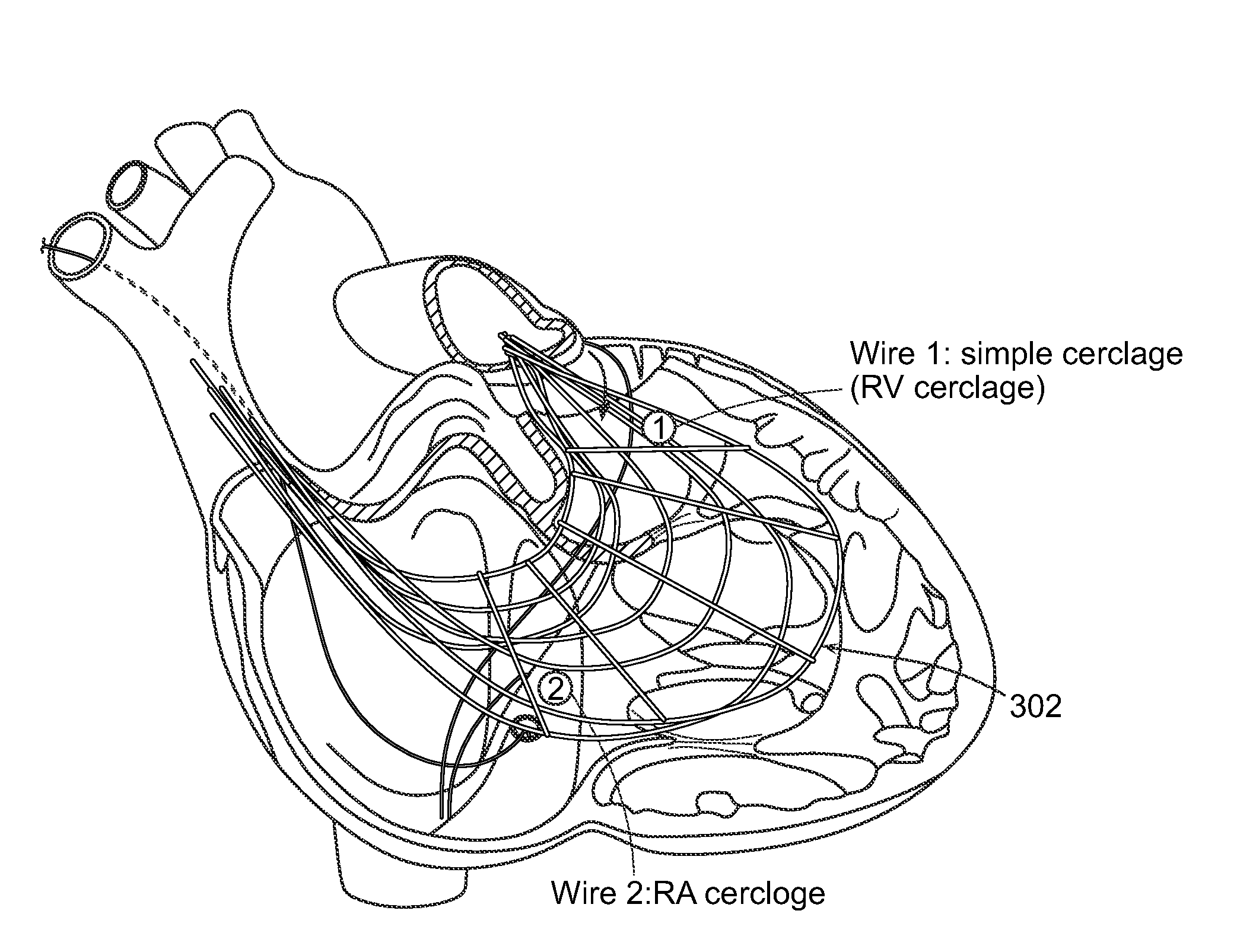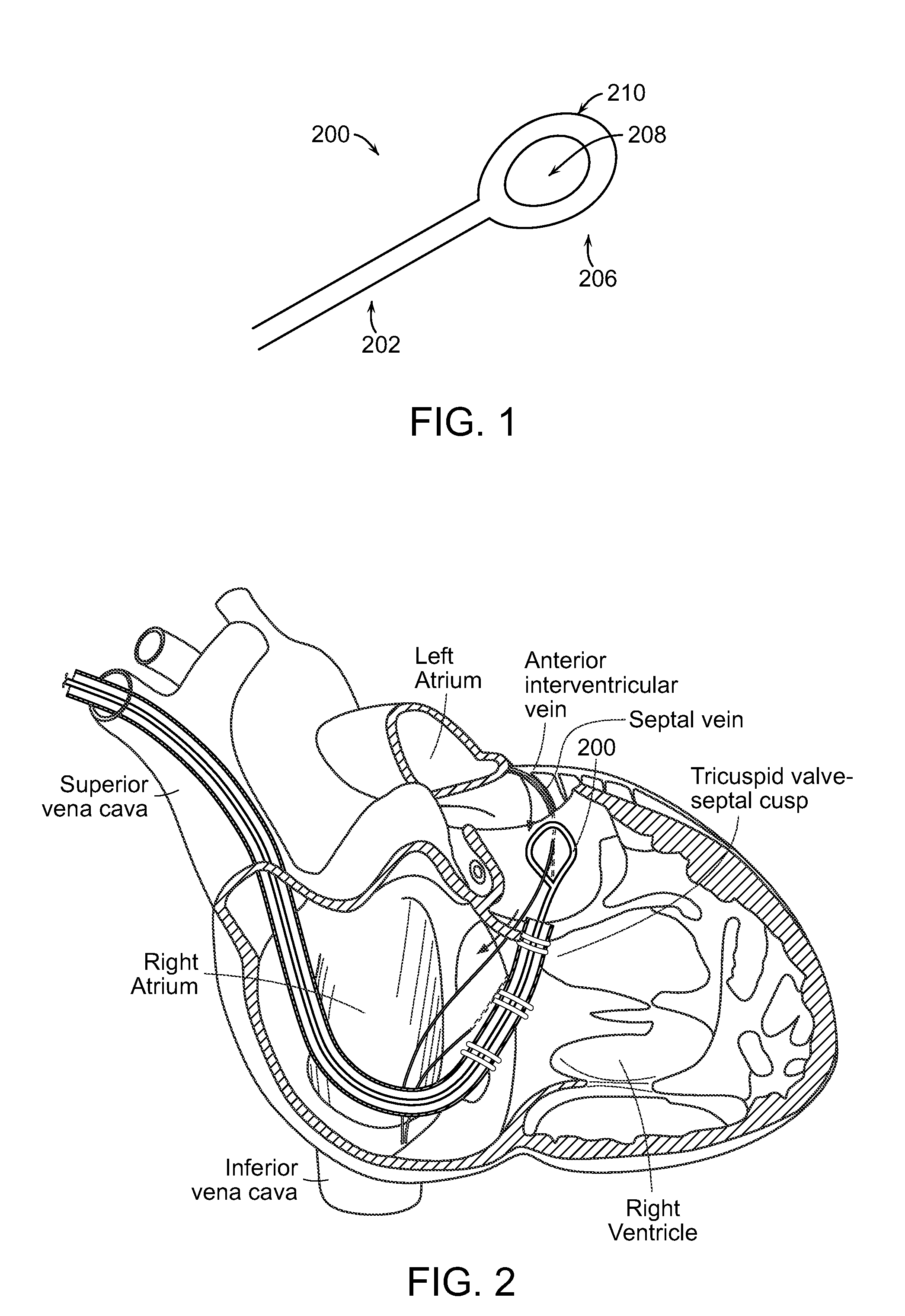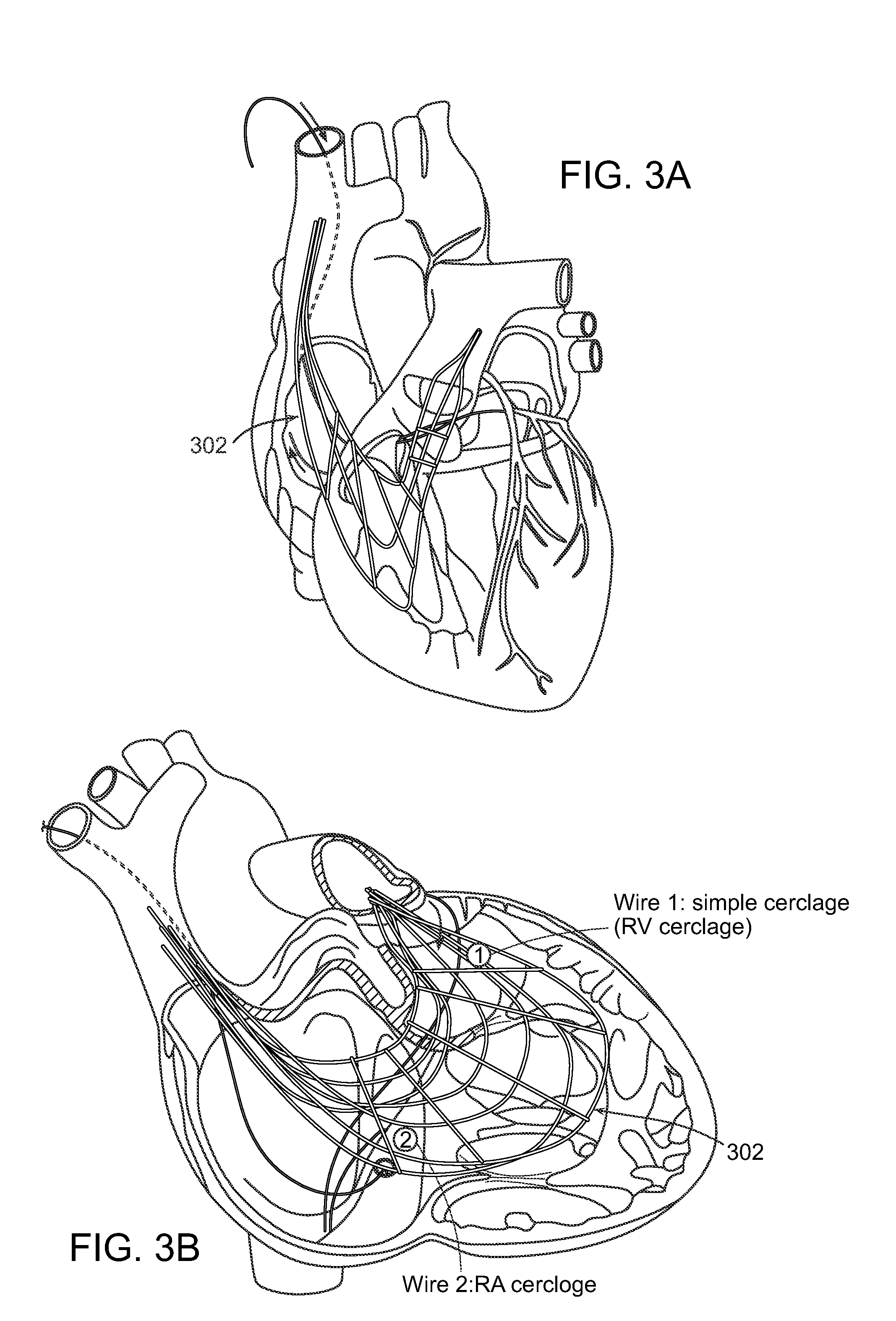Methods and devices for transcatheter cerclage annuloplasty
a technology of mitral valve and annuloplasty, applied in the field of methods and devices for annuloplasty, can solve the problems of inexorable deterioration of heart muscle function, functional impairment, congestive heart failure, etc., and achieve the effect of facilitating the annuloplasty of the mitral valv
- Summary
- Abstract
- Description
- Claims
- Application Information
AI Technical Summary
Benefits of technology
Problems solved by technology
Method used
Image
Examples
Embodiment Construction
[0051]The present invention features methods, devices and apparatus for repairing a cardiac valve in a patient. In particular, methods, devices and apparatus are featured for treatment of valvular regurgitation using cerclage annuloplasty techniques. It is noted that while methods, apparatus and devices are described, in particular, in connection with mitral valve repair, such methods, devices and apparatus can also be used in connection with tricuspid valve repair.
[0052]The present methods, apparatus and devices can be used in connection with known imaging systems and techniques to image the internal bodily tissues, organs, structures, cavities, and spaces of the subject being treated. For example, the systems and methods described herein can include transmitter or receiver coils to facilitate active-device navigation using an imaging system, such as magnetic-resonance imaging (MRI). This imaging can be conducted along arbitrary or predetermined planes using various imaging methods...
PUM
 Login to View More
Login to View More Abstract
Description
Claims
Application Information
 Login to View More
Login to View More - R&D
- Intellectual Property
- Life Sciences
- Materials
- Tech Scout
- Unparalleled Data Quality
- Higher Quality Content
- 60% Fewer Hallucinations
Browse by: Latest US Patents, China's latest patents, Technical Efficacy Thesaurus, Application Domain, Technology Topic, Popular Technical Reports.
© 2025 PatSnap. All rights reserved.Legal|Privacy policy|Modern Slavery Act Transparency Statement|Sitemap|About US| Contact US: help@patsnap.com



